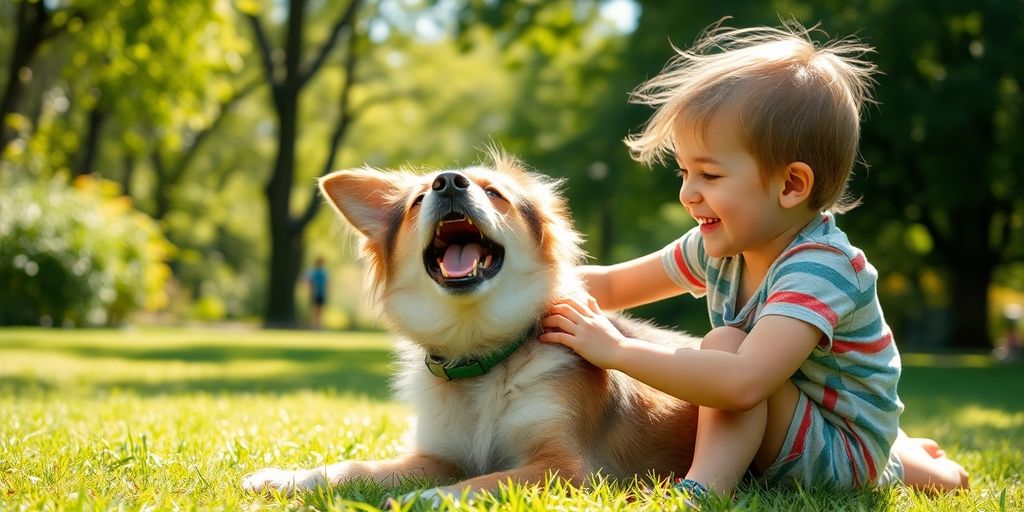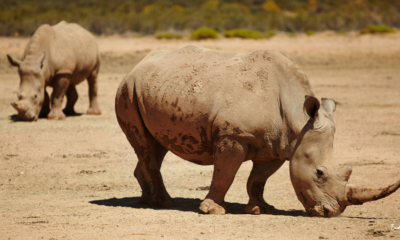Alternative Energy
Animal Rescue Organisations: Innovating for a Better Future for Animals

Animal rescue organisations play a crucial role in protecting and caring for animals in need. They constantly innovate to improve their methods and strategies, ensuring a brighter future for both domestic and wild animals. This article explores various innovative approaches, the impact of these organisations on wildlife conservation, and the challenges they face while highlighting the importance of community involvement and technological advancements.
Key Takeaways
- Animal rescue groups are using new methods to help animals and improve their care.
- Collaboration and training are essential for effective rescue operations.
- Community support is vital in the success of rescue efforts.
- Technological advancements are changing how rescues are conducted.
- Funding and resources are crucial for the sustainability of animal rescue organisations.
Innovative Approaches in Animal Rescue Organisations
Animal rescue organisations are constantly evolving, employing creative strategies to enhance their impact. These innovative approaches not only improve animal welfare but also foster community involvement and awareness.
Collaborative Research Initiatives
Collaboration is key in animal rescue. By partnering with universities and research institutions, organisations can:
- Share knowledge and best practises.
- Develop new techniques for animal care and rehabilitation.
- Conduct studies that inform policy changes.
For instance, the Academy of Rescue and Conservation (ARC) has established a network for sharing lifesaving techniques, significantly boosting survival rates for rescued animals.
Advanced Training Programmes
Training is essential for effective animal rescue. Advanced programmes include:
- Workshops on safe animal handling.
- Courses on disaster response and recovery.
- E-learning opportunities for global outreach.
These initiatives ensure that rescue workers are well-prepared to handle various situations, ultimately leading to better outcomes for animals in distress.
Grassroots Learning and Innovations
Grassroots efforts often lead to groundbreaking ideas. Local communities can:
- Identify unique challenges in their areas.
- Develop tailored solutions that address specific needs.
- Share successful strategies with other organisations.
This bottom-up approach not only empowers communities but also enhances the overall effectiveness of animal rescue efforts.
By embracing innovation and collaboration, animal rescue organisations can create a brighter future for animals in need.
Impact of Animal Rescue Organisations on Wildlife Conservation
Animal rescue organisations play a crucial role in protecting wildlife and their habitats. Their efforts not only save individual animals but also contribute to broader conservation goals. These organisations are vital for maintaining biodiversity.
Rescue and Rehabilitation Efforts
- Immediate Response: Many organisations respond quickly to animals in distress, providing necessary medical care and rehabilitation.
- Long-term Care: Some animals cannot be released back into the wild and require ongoing care in sanctuaries.
- Community Involvement: Local communities often participate in rescue efforts, fostering a sense of responsibility towards wildlife.
Policy Advocacy and Legislative Wins
Animal rescue organisations advocate for laws that protect wildlife. Their efforts have led to:
- Bans on harmful practises like puppy mills.
- Protection of endangered species through legislation.
- Successful campaigns against illegal wildlife trade.
Wildlife Corridor Establishments
Creating wildlife corridors is essential for animal movement and habitat connectivity. These corridors help:
- Reduce roadkill by providing safe passages for animals.
- Maintain genetic diversity by connecting isolated populations.
- Support ecosystem health by allowing species to migrate in response to climate change.
The work of animal rescue organisations is not just about saving individual animals; it’s about creating a sustainable future for all species. Their impact is felt across ecosystems, ensuring that wildlife can thrive alongside human communities.
| Organisation | Key Achievements |
|---|---|
| Humane Society of the United States | Banned puppy mills, protected endangered species |
| Defenders of Wildlife | Reintroduced wolves to Yellowstone, established corridors |
| IFAW | Rescued thousands of animals, advocated for policy changes |
Disaster Response and Animal Rescue
Natural Disaster Preparedness
In times of crisis, being ready is crucial. Animal rescue organisations must have plans in place to respond effectively. Key steps include:
- Creating emergency response plans that outline roles and responsibilities.
- Training volunteers in rescue techniques and animal handling.
- Establishing partnerships with local authorities and other organisations.
Emergency Response Techniques
When disaster strikes, quick action can save lives. Some effective techniques include:
- Assessing the situation to determine the best course of action.
- Using appropriate equipment for rescue, such as nets and carriers.
- Providing immediate care to injured animals before transport.
Community Support and Involvement
Community engagement is vital for successful rescue operations. Ways to involve the community include:
- Organising training sessions for local volunteers.
- Creating awareness campaigns about disaster preparedness for pets.
- Encouraging donations to support rescue efforts during emergencies.
In times of disaster, community support can make a significant difference in the lives of animals in need.
By focusing on these areas, animal rescue organisations can enhance their disaster response capabilities and ensure a better future for animals in crisis.
| Key Focus Areas | Importance |
|---|---|
| Preparedness | Saves lives |
| Quick Response | Reduces suffering |
| Community Involvement | Builds resilience |
This structured approach not only helps in immediate rescue efforts but also strengthens the overall capacity of organisations to handle future challenges.
Highlighting the importance of animal welfare, these efforts contribute to a more compassionate society.
Technological Advancements in Animal Rescue
Lifesaving Techniques for Marine Mammals
Innovations in animal rescue have led to remarkable improvements in the survival rates of marine mammals. For instance, organisations like IFAW have developed new techniques that have increased the survival rate of stranded dolphins from 30% to nearly 80%. This transformation is crucial for the future of marine conservation.
Cloud-Based Marketing Tools
Animal rescue organisations are now using cloud-based marketing tools to enhance their outreach. These tools help in:
- Promoting adoption events
- Engaging with the community
- Raising awareness about animal welfare issues
Mobile Applications for Lost Pets
Mobile technology has also played a significant role in animal rescue. Apps designed to help reunite lost pets with their owners are becoming increasingly popular. These applications allow pet owners to:
- Report lost pets quickly
- Share information with local shelters
- Receive alerts about found pets in their area
The integration of technology in animal rescue not only saves lives but also fosters a community of support and awareness.
In summary, the advancements in technology are reshaping the landscape of animal rescue, making it more efficient and effective than ever before. By embracing these innovations, organisations can ensure a brighter future for animals in need.
Community Engagement and Education
Humane Education Programmes
Humane education is vital for teaching people about the importance of treating animals with kindness. These programmes often include:
- Workshops for schools
- Community events
- Interactive sessions with animals
These initiatives help foster a sense of responsibility towards animals.
Volunteer and Foster Networks
Volunteering is a great way for community members to get involved. Some ways to participate include:
- Fostering pets in need
- Assisting at local shelters
- Organising fundraising events
These networks not only support the animals but also build strong community ties.
Public Awareness Campaigns
Raising awareness about animal welfare is crucial. Campaigns can include:
- Social media outreach
- Local events and fairs
- Educational materials distributed in schools
Engaging the community is essential for creating a better future for animals.
By focusing on humane education, fostering networks, and public awareness, animal rescue organisations can significantly impact their communities.
Highlight
Explore exciting opportunities for personal growth and community engagement through our scout programming at the humane animal rescue of Pittsburgh!
Funding and Support for Animal Rescue Organisations
Animal rescue organisations rely heavily on various forms of financial support to continue their vital work. Without adequate funding, many of these organisations would struggle to provide the necessary care for animals in need.
Donations and Grants
- Individual Donations: Many animal rescue organisations depend on the generosity of individuals who care about animal welfare. Regular donations can significantly impact their operations.
- Grants: Various foundations and government bodies offer grants specifically for animal welfare projects. These funds can help cover costs for shelter, medical care, and community outreach.
- Fundraising Events: Organising events such as charity runs, auctions, or community fairs can raise substantial funds while also increasing awareness about animal rescue efforts.
Fundraising Initiatives
- Online Campaigns: Many organisations use social media platforms to launch fundraising campaigns, reaching a wider audience.
- Corporate Sponsorships: Partnering with businesses can provide financial support and resources, benefiting both parties.
- Merchandise Sales: Selling branded merchandise can generate additional income while promoting the organisation’s mission.
Corporate Partnerships
- Collaborations: Working with corporations can lead to mutually beneficial partnerships, where companies support animal rescue efforts in exchange for positive publicity.
- Employee Engagement: Many companies encourage their employees to volunteer or donate, often matching their contributions to amplify the impact.
- Sponsorship Programmes: Corporations can sponsor specific projects or events, providing essential funding while enhancing their corporate social responsibility profile.
Animal rescue organisations play a crucial role in protecting vulnerable animals, and their success often hinges on the support they receive from the community and beyond. Every contribution counts!
Challenges Faced by Animal Rescue Organisations
Animal rescue organisations play a crucial role in protecting and caring for animals in need. However, they face several significant challenges that can hinder their efforts. Resource limitations are often at the forefront, making it difficult to provide adequate care and support for all animals. Here are some of the main challenges:
Overcoming Resource Limitations
- Funding Shortages: Many organisations rely on donations and grants, which can fluctuate.
- Staffing Issues: Finding and retaining qualified staff can be difficult, especially in remote areas.
- Facility Constraints: Limited space can restrict the number of animals that can be rescued and cared for.
Addressing Animal Cruelty
- Rising Cases: There has been an increase in reported cases of animal cruelty, requiring more resources for investigation and intervention.
- Legal Challenges: Navigating the legal system to prosecute offenders can be complex and time-consuming.
- Public Awareness: Many people are still unaware of the signs of animal cruelty, making education essential.
Navigating Legal and Regulatory Hurdles
- Complex Regulations: Different regions have varying laws regarding animal welfare, which can complicate rescue efforts.
- Licencing Requirements: Obtaining the necessary permits can be a lengthy process, delaying rescue operations.
- Compliance Costs: Meeting legal standards often requires additional funding and resources.
The challenges faced by animal rescue organisations are significant, but with community support and innovative solutions, they can continue to make a positive impact on animal welfare.
In summary, while animal rescue organisations strive to save and protect animals, they must navigate a landscape filled with challenges that require ongoing support and adaptation. By addressing these issues, they can enhance their effectiveness and ensure a better future for animals in need.
Success Stories from Animal Rescue Organisations

High-Profile Rescues
Animal rescue organisations have achieved remarkable feats in saving animals from dire situations. One notable example is the rescue of 102 dolphins during a mass stranding in Cape Cod, where the survival rate increased from 30% to nearly 80% due to innovative techniques. This success showcases the dedication and expertise of rescue teams.
Innovative Programmes and Initiatives
Many organisations have developed unique programmes that have made a significant impact. Here are a few:
- Trap-Neuter-Return (TNR) initiatives for community cats, reducing shelter euthanasia rates.
- Pet retention programmes that help keep pets in their homes, preventing unnecessary surrenders.
- Emergency response training for volunteers, ensuring effective action during crises.
Community Impact and Testimonials
The influence of these organisations extends beyond individual rescues. They foster community involvement and awareness. For instance:
- Kansas City Pet Project has transformed its shelter into a No-Kill facility, caring for over 10,000 animals annually.
- Alley Cat Allies has successfully advocated for TNR ordinances, improving the lives of countless community cats.
- IFAW has implemented programmes in over 40 countries, showcasing their global commitment to animal welfare.
The work of animal rescue organisations not only saves lives but also inspires communities to come together for a common cause. Their efforts remind us that every animal deserves a chance at a better life.
Summary Table of Success Stories
| Organisation | Notable Achievement | Impact on Animals |
|---|---|---|
| IFAW | Rescued 102 dolphins in a mass stranding | Increased survival rates |
| Kansas City Pet Project | Achieved a live-release rate of over 95% | Saved over 10,000 animals annually |
| Alley Cat Allies | Advocated for TNR ordinances in multiple cities | Reduced euthanasia rates |
Future Directions for Animal Rescue Organisations
Sustainable Practises
Animal rescue organisations are increasingly focusing on sustainable practises to ensure long-term success. This includes:
- Implementing eco-friendly operations
- Reducing waste through recycling and reusing materials
- Promoting the adoption of local wildlife and pets to decrease overpopulation
Global Collaboration
To tackle global challenges, animal rescue organisations are forming global collaborations. This involves:
- Sharing resources and knowledge across borders
- Partnering with international wildlife conservation groups
- Engaging in joint rescue missions during crises
Adapting to Climate Change
As climate change impacts wildlife habitats, organisations must adapt. Key strategies include:
- Developing emergency response plans for natural disasters
- Conducting research on climate resilience for various species
- Advocating for policies that protect vulnerable ecosystems
The future of animal rescue relies on our ability to innovate and adapt to changing circumstances, ensuring that we can protect animals in need effectively.
| Focus Area | Current Initiatives | Future Goals |
|---|---|---|
| Sustainable Practises | Eco-friendly operations | Zero waste by 2030 |
| Global Collaboration | International partnerships | Global rescue network by 2025 |
| Adapting to Climate Change | Emergency response plans | Climate resilience research by 2026 |
Animal Rescue Organisations and Policy Change
Legislative Advocacy
Animal rescue organisations play a crucial role in shaping laws that protect animals. They engage in legislative advocacy to push for stronger animal welfare laws. Some key actions include:
- Lobbying for new laws that prevent animal cruelty.
- Collaborating with lawmakers to draught effective legislation.
- Raising public awareness about animal rights issues.
Campaigns Against Illegal Wildlife Trade
Many organisations focus on combating the illegal wildlife trade, which poses a significant threat to various species. Their efforts include:
- Conducting undercover investigations to expose illegal activities.
- Partnering with international bodies to strengthen enforcement.
- Educating the public on the importance of wildlife conservation.
Impact on Animal Welfare Laws
The influence of animal rescue organisations can be seen in the improvement of animal welfare laws. Their efforts have led to:
- The banning of puppy mills in several regions.
- Enhanced protections for endangered species.
- The reduction of animal testing in various industries.
The work of animal rescue organisations is vital for creating a safer world for animals. Their advocacy not only saves lives but also fosters a culture of compassion and respect for all living beings.
Training and Development in Animal Rescue
Professional Development Courses
Animal rescue organisations are increasingly recognising the importance of professional development for their staff. These courses help improve skills and knowledge in various areas, including:
- Wildlife rescue techniques
- Safe animal handling
- Disaster response strategies
Workshops and Seminars
Workshops and seminars provide hands-on experience and are essential for sharing best practises. Some key topics include:
- Marine mammal rescue
- Emergency response protocols
- Community engagement strategies
E-Learning Opportunities
With the rise of technology, e-learning has become a vital tool for training. Online courses allow participants to learn at their own pace and cover a wide range of subjects, such as:
- Animal behaviour
- Legal aspects of animal rescue
- Health and safety measures
Investing in training and development is crucial for the success of animal rescue organisations. It not only enhances the skills of the team but also improves the overall effectiveness of rescue efforts.
In summary, training and development in animal rescue is essential for ensuring that organisations can respond effectively to the needs of animals in distress. By focusing on professional development, workshops, and e-learning, these organisations can continue to innovate and improve their practises.
Animal Rescue Organisations and Mental Health
Support for Rescue Workers
Animal rescue workers often face emotional challenges due to the nature of their work. Providing mental health support is crucial for their well-being. Here are some ways organisations can help:
- Counselling services for staff and volunteers.
- Peer support groups to share experiences and coping strategies.
- Workshops focused on stress management and resilience.
Therapeutic Benefits of Animal Interaction
Interacting with animals can have significant mental health benefits. Studies show that spending time with pets can:
- Reduce stress and anxiety.
- Improve mood and emotional well-being.
- Enhance feelings of companionship and support.
Community Mental Health Initiatives
Many animal rescue organisations are now involved in community mental health initiatives. These programmes aim to:
- Promote the human-animal bond as a therapeutic tool.
- Organise community events that encourage interaction with animals.
- Provide educational resources on the benefits of animal companionship.
Engaging with animals not only helps them but also brings joy and healing to people. This connection can be a powerful tool for mental health.
By focusing on these areas, animal rescue organisations can create a supportive environment for both animals and humans, fostering a healthier community overall.
Conclusion
In conclusion, animal rescue organisations are making significant strides towards a brighter future for animals. By embracing new ideas and working together, these groups are not only saving lives but also improving the way we care for animals. The innovative approaches being developed, such as better training and disaster response strategies, are crucial in adapting to the ever-changing challenges we face. As we move forward, it is essential for everyone to support these efforts, whether through donations, volunteering, or simply spreading the word. Together, we can ensure that every animal has the chance to thrive in a safe and loving environment.
Frequently Asked Questions
What are animal rescue organisations?
Animal rescue organisations are groups that help save and care for animals in need. They rescue animals from abuse, neglect, or abandonment and find them loving homes.
How can I get involved with an animal rescue organisation?
You can volunteer your time, foster animals, or donate money or supplies to support their work. Many organisations also have events where you can participate.
What types of animals do rescue organisations help?
These organisations help a variety of animals, including dogs, cats, birds, and sometimes wildlife. Their focus is on any animal that needs help.
Are animal rescue organisations non-profit?
Yes, most animal rescue organisations are non-profit. They rely on donations and grants to operate and provide care for animals.
How do animal rescue organisations find homes for animals?
They often use social media, websites, and community events to promote animals available for adoption. They also work with local shelters and other organisations.
What should I consider before adopting an animal?
Before adopting, think about your lifestyle, space, and ability to care for an animal. Make sure you can commit to the animal’s needs for its entire life.
What happens to animals that are not adopted?
Many organisations work hard to find homes for all their animals. If an animal cannot be adopted, they may stay in the organisation’s care or be placed in a foster home.
How do I report animal cruelty?
If you see animal cruelty, you should contact your local animal control or law enforcement. They can investigate and take action to help the animal.
-

 Press Release7 days ago
Press Release7 days agoClinical Trials Market Set for Robust Growth, Driven by Drug Development Surge and Digital Innovation
-

 Press Release7 days ago
Press Release7 days agoPediatric Vaccines Market: Safeguarding Futures, Driving Growth
-

 Press Release7 days ago
Press Release7 days agoWaterproof Structural Adhesives Market: A Comprehensive Study Towards USD 10.3 Billion in 2035
-

 Press Release7 days ago
Press Release7 days agoDownhole Tools Market: Navigating Subsurface Frontiers with Precision
-

 Press Release7 days ago
Press Release7 days agoFaropenem Sodium Market: A Potent Weapon in the Fight Against Bacterial Infections





















